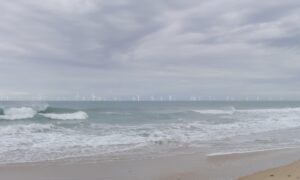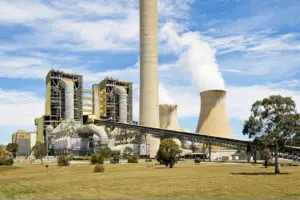New South Wales Labor says it will aim for at least a 50 per cent share of renewables in the state’s electricity consumption by 2030, and will source the equivalent of all the state government electricity needs from renewables by 2025.
The policy unveiled by shadow energy minister Adam Searle follows on from the massive investment plan unveiled ten days ago, when Labor promised up to 7GW of large-scale wind and solar through a series of reverse auction, on top of the 2GW of rooftop solar expected to be added through its solar rebate program.
NSW faces the closure of the Liddell coal generator in 2022 and Vales Point in the late 2020s, followed closely by Bayswater and Eraring in the early 2030s.
The Australian Energy Market Operator says it faces one of the most dramatic and rapid transformations of any state, thanks to the sheer size of its grid – it has a peak demand of 14,700MW – highlighted by this graph (below) included in the Integrated System Plan.
The red and black in the second circle are all that is expected to be left of the gas and coal generators that currently dominate the grid.
Searle told RenewEconomy on Thursday that the Labor plan would send a clear policy to investors and developers and ensure that the state had the resources in place ahead of the expected coal retirements.
“Renewable energy is the cheapest new build form of energy, so if you want to bring prices down and tackle climate change, it is the future of our energy system,” Searle said.
As part of the package, Searle said a Labor government, should it win power in the state poll on March 23, would convene a “climate change summit’ to map a plan to reach net zero emissions by 2050.
The 50 per cent target for renewable energy means that each of the state grids in the National Electricity Market would have a 50 per cent target by 2030. Tasmania is already there, South Australia will likely source close to 100 per cent of its demand through wind and solar by 2030, and ACT will reach that milestone by 2020.
Victoria and Queensland, both with Labor governments, have committed to 50 per cent renewables by 2030.
NSW, however, is the biggest grid in the state. It is thought that another 3 or 4GW of capacity will be needed by 2030 – over and above the 7GW announced a few weeks ago.
Searle said dispatchable generation (i.e. via storage) would be developed in consultation with AEMO and likely through the reverse auction mechanism. If Snowy 2.0 were to go ahead, as now seems likely following the green light from the federal government, then the need for more storage is much reduced.
The state government apparently has three different contracts for electricity supplies for services like schools, hospitals and prisons, and Searle says he understands that all three could be up for renewable by 2020, which will give an opportunity to inject more renewables into state government procurement almost immediately.
Greenpeace said it welcomed Labor’s plan to “turbocharge” the transition from coal to clean energy.
“After almost a decade of wilful inaction by Premier Gladys Berejiklian and the Liberal Party, it’s great to see Labor proposing measures that will help replace our aging coal burners with clean energy,” Greenpeace Australia Pacific campaign manager Holly Dawson said.
“Replacing that dirty power with energy from clean sources like wind and solar will not only help ease the climate crisis, but will benefit the whole of New South Wales with cheaper bills.
“However, we are disappointed that today’s announcement does not include a clear commitment and pathway to ending deforestation in New South Wales, which is the key driver of extinction and a key contributor to global warming.
Greenpeace and other environmental groups also want all household (including low-income and rental properties) to be able to access solar power within 10 years, and they suggest by introducing a Solar For All Rebate and helping families with solar install batteries.
They also suggest doubling New South Wales’ energy productivity by 2030 by investing in a range of energy efficiency programs; and want the net-zero carbon emissions target brought forward to 2040.









